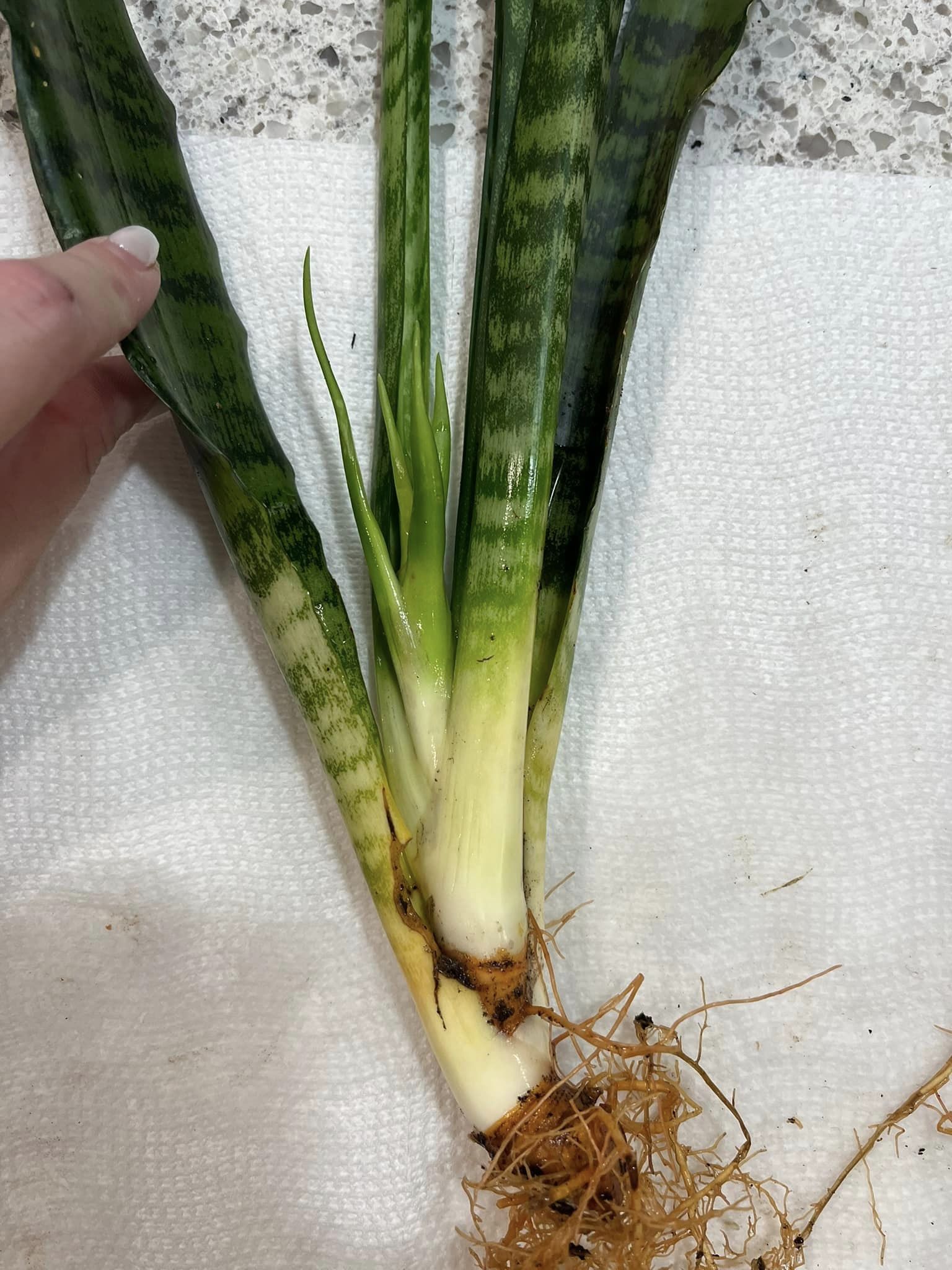
The snake plant, with its upright, sword-like leaves boasting vibrant green hues and yellow variegations in some varieties, is a popular choice for houseplant enthusiasts. Not only is it known for its air-purifying properties, but it’s also incredibly resilient, thriving on neglect. But what if you crave a touch more greenery in your abode? The good news is, your trusty snake plant holds the key to multiplying its magnificence through the magic of propagation.
This guide equips you with the knowledge and techniques to transform your solitary snake plant into a thriving battalion. Get ready to witness the metamorphosis of your single sentinel into a leafy legion, adding a touch of botanical bounty to every corner of your home.
Dividing and Conquering: The Power of Rhizomes

Snake plants, unlike many houseplants, reproduce through underground stems called rhizomes. These horizontal, fleshy structures sprout new shoots, providing the perfect opportunity for propagation. Here’s how to unlock the potential of your snake plant’s rhizomes:
Tools and Materials:
- Sharp, sterile knife or pruners
- Potting mix suitable for succulents or cacti (well-draining)
- Pots with drainage holes (size depending on the number of divisions)
- Fungicide (optional)
The Art of Division
- Unearthing the Treasure: Water your snake plant thoroughly a day or two before the propagation process. This plumps up the soil and makes it easier to remove the plant from the pot without damaging the roots. Carefully remove the snake plant from its pot.
- Untangling the Rhizome: Gently loosen the soil around the base of the plant to expose the rhizome. You’ll see the main rhizome with smaller shoots or “pups” growing from it.
- Strategic Slicing: Using your sterilized knife or pruners, make clean cuts through the rhizome, separating the pups with at least 2-3 leaves each (or more for larger pups) and a section of the rhizome itself. Treat any cuts with fungicide to prevent rot (optional).
- Potting Up for Success: Choose pots with drainage holes sized appropriately for the snake plant divisions. Fill the pots with fresh, well-draining cactus or succulent potting mix. Plant each division, ensuring the rhizome is buried slightly below the soil surface. Water moderately and allow the excess water to drain freely.
Pro-Tip: Don’t be afraid to divide your snake plant generously! As long as each division has a healthy portion of rhizome and a few leaves, it will establish itself quickly.
Leaf It to Propagation: The Unexpected Method
While division is the most common method, snake plants can also be propagated through individual leaves! This method takes longer but offers a unique way to maximize the growth potential of your existing plant.
Leaf Power :
- Selecting the Right Leaf: Choose healthy, mature leaves that are free of blemishes or damage. You can use a single leaf or cut a leaf lengthwise into several sections, ensuring each section has a portion of the central vein.
- Let’s Get Splitting (Optional): If opting to propagate from sections, use a sharp, sterile knife to make clean, vertical cuts along the length of the leaf, ensuring each section retains a part of the central vein.
- Encouraging Growth: Allow the cut ends of the leaves (whole or sections) to callous over for a day or two. This helps prevent rot.
- Planting for Potential: Prepare a shallow pot with well-draining cactus or succulent mix. Lay the leaf sections flat on the soil surface, with the cut end positioned slightly into the soil. Alternatively, for whole leaves, insert the bottom half of the leaf into the soil, keeping the rest upright. Water sparingly to dampen the soil, not soaking it.
- Patience is a Virtue: Propagating from leaves is a slow process. It can take several weeks for roots and new shoots to develop from the base of the leaf section. Be patient, keep the soil slightly moist but not soggy, and provide bright, indirect light.
Nurturing Your New Recruits: Care Tips for Propagated Snake Plants

Once you’ve embarked on your snake plant propagation journey, providing proper care is crucial for success. Here’s what your new plant divisions or leaf sprouts need to thrive:
- Light: Snake plants, even the newly propagated ones, prefer bright, indirect light. Avoid harsh, direct sunlight that can scorch the leaves.
- Watering: Water your propagated snake plants sparingly. Overwatering is the leading cause of failure. Allow the soil to dry completely between waterings. Signs
- Signs of Thirst: Look for signs your plant needs water, such as wrinkled or curled leaves. However, avoid watering based on a schedule; check the soil moisture level instead.
- Humidity: Snake plants don’t require high humidity levels, making them ideal for most homes. However, if the air is particularly dry, occasional misting can be beneficial.
- Fertilization: Propagated snake plants don’t need frequent fertilization. A light feeding with a balanced fertilizer diluted to half strength once or twice during the growing season (spring and summer) is sufficient.
- Potting Up as They Grow: As your propagated snake plant divisions or leaf sprouts mature, they’ll eventually outgrow their initial pots. Repot them into containers that are just slightly larger (1-2 inches wider) when the roots start circling the pot or the plant appears crowded.
Troubleshooting Common Issues
Even with the best intentions, propagation hiccups can occur. Here’s how to address some common problems:
- Leaf Rot: This is often caused by overwatering. If you notice mushy leaves, remove the affected parts with a sterile knife and adjust your watering habits. Ensure the potting mix drains well and allow the soil to dry completely between waterings.
- Slow Growth: Inadequate light or cool temperatures can contribute to slow growth. Ensure your propagated snake plant receives bright, indirect light and maintain room temperatures between 65-80°F (18-27°C).
- Lack of New Shoots (Leaf Propagation): Propagating from leaves is a slow process. Be patient and ensure you’re providing the right conditions (bright, indirect light, moist but not soggy soil).
Propagating your snake plant is an incredibly rewarding experience. Witnessing the transformation of a single plant into a thriving group adds a touch of accomplishment and brings the joy of nurturing new life into your home.
